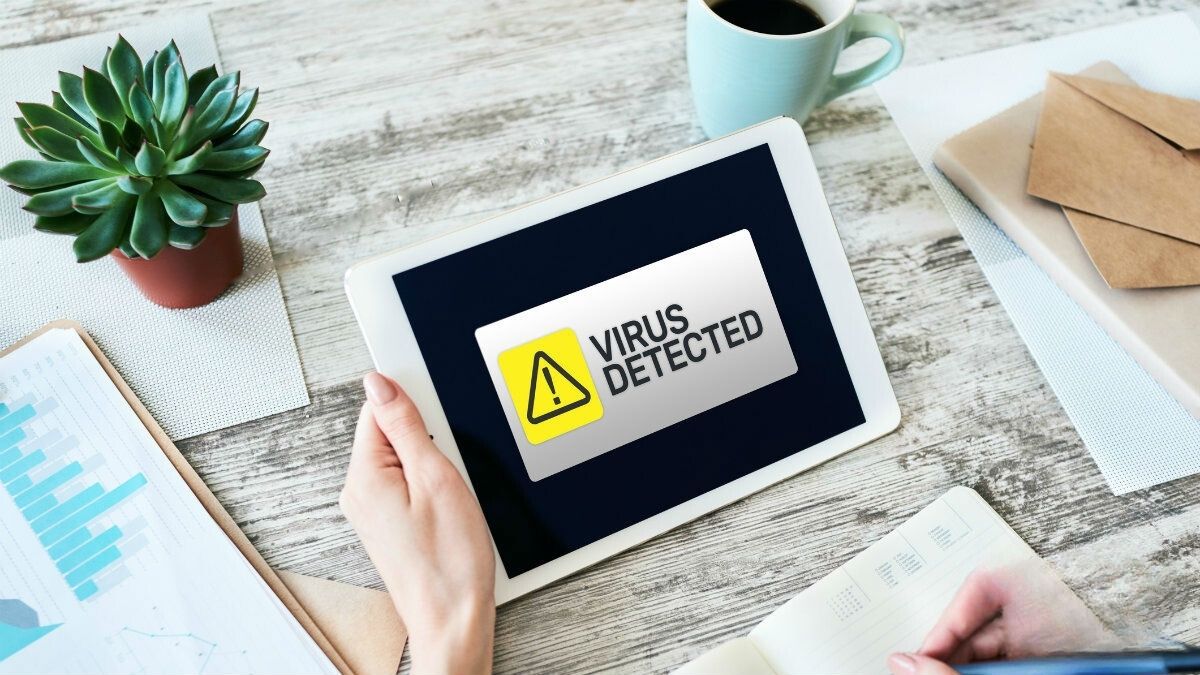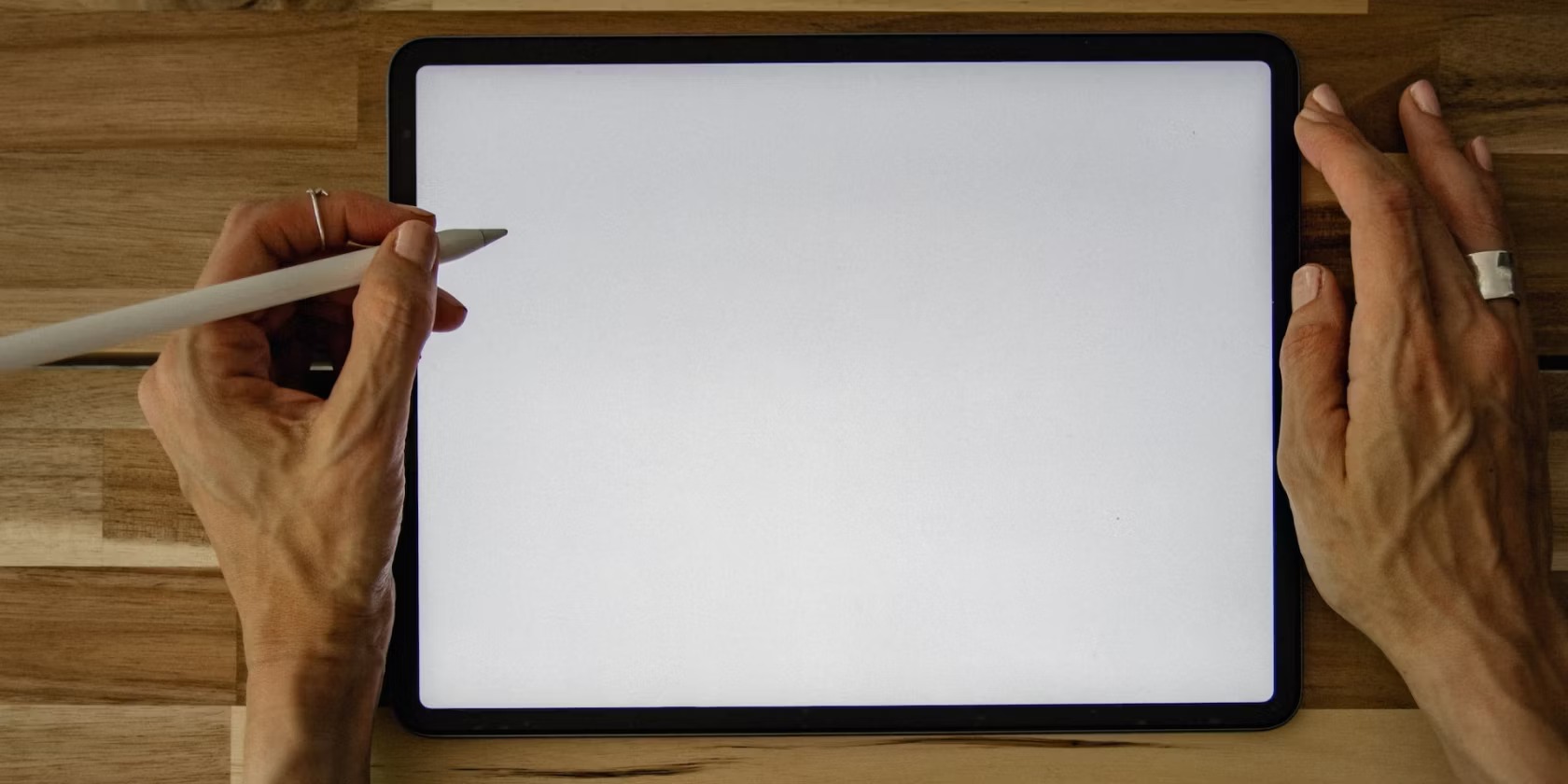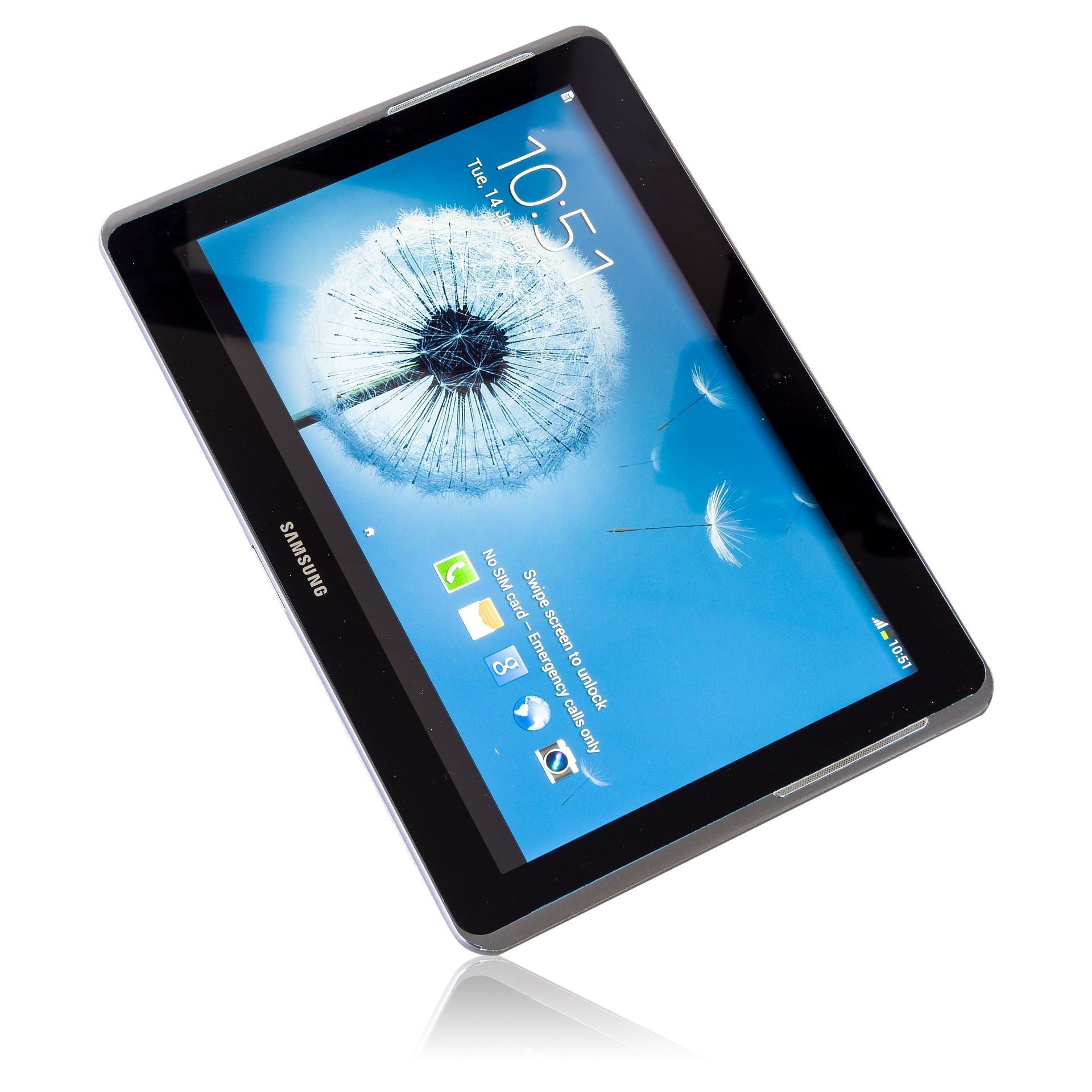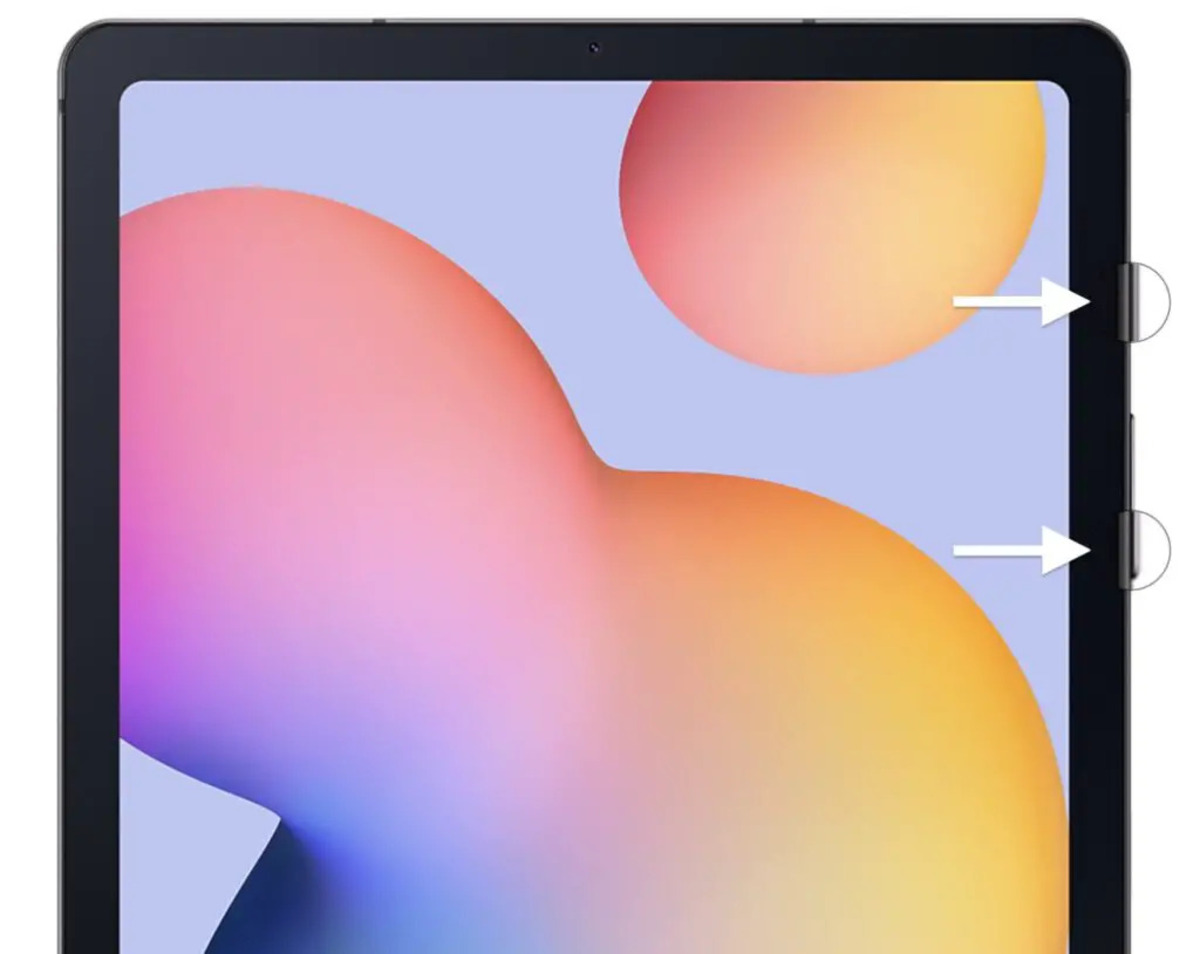Introduction
A tablet has become an integral part of our lives, whether for work, entertainment, or staying connected with loved ones. However, just like any other electronic device, tablets are not immune to malware and viruses. These malicious software can compromise your privacy, steal your personal information, and degrade the performance of your device.
Detecting a virus on your tablet is essential for maintaining its security and ensuring smooth operation. In this article, we will discuss the signs that indicate your tablet may be infected with a virus and provide step-by-step instructions on how to detect and remove the virus.
Identifying the presence of a virus on your tablet can be challenging, as most viruses are designed to operate discreetly in the background. However, by paying close attention to certain indicators, you can successfully identify and address any potential virus threats.
In the following sections, we will discuss ten signs that may indicate your tablet has a virus. These signs include slow performance, increased data usage, battery drainage, unusual pop-ups and ads, unauthorized app installations, strange behaviors and malfunctions, overheating, suspicious text messages or calls, and security warnings from apps or antivirus software.
By learning how to detect these signs, you will be better equipped to protect your tablet and take the necessary steps to remove a virus if detected. It is important to note that prevention is key when it comes to viruses, so make sure to follow best practices such as installing reputable antivirus software and avoiding suspicious downloads or email attachments.
Let’s dive into the various signs of a virus on your tablet and the steps you can take to keep your device secure and virus-free.
Signs of a Virus on Your Tablet
Your tablet is meant to enhance your digital experience, but if you notice any of the following signs, it could indicate that your device has been infected by a virus. Being aware of these signs will help you quickly identify and address any virus-related issues to protect your tablet and your personal data.
1. Slow Performance: If your tablet suddenly becomes sluggish, takes longer to open apps, or freezes frequently, it could be a sign of a virus. Viruses consume system resources, causing your tablet’s performance to suffer.
2. Increased Data Usage: Malware often runs in the background, using your tablet’s data without your knowledge. If you notice a sudden increase in data usage, especially when you are not actively using your tablet, it could be due to a virus.
3. Battery Drainage: A virus can cause your tablet’s battery life to plummet rapidly. If your tablet consistently runs out of battery sooner than usual, even with minimal usage, it may be infected.
4. Unusual Pop-ups and Ads: An onslaught of unexpected pop-ups, ads, or redirects while using your tablet’s browser or other apps can be a telltale sign of a virus. These intrusive elements are often designed to generate revenue for the hackers or collect your personal information.
5. Unauthorized App Installations: If you notice unfamiliar apps appearing on your tablet that you did not download or install, it could be a sign of a virus. Some malware installs additional apps without your consent or disguises themselves as legitimate apps.
6. Strange Behavior and Malfunctions: If your tablet starts behaving erratically, such as apps crashing, settings changing on their own, or unusual error messages appearing, it could indicate a virus infection. Viruses can disrupt the normal functioning of your device.
7. Overheating: If your tablet becomes excessively hot, even during normal usage, it could indicate a malware infection. Some viruses consume a significant amount of processing power, causing your device to heat up.
8. Suspicious Text Messages or Calls: If you receive unexpected text messages, calls from unknown numbers, or messages asking you to click on suspicious links, it could be a phishing attempt or a virus trying to gain access to your device.
9. Security Warnings from Apps or Antivirus Software: If your antivirus software or other security apps repeatedly issue warnings about potential threats or alert you to the presence of malware, it’s crucial to investigate further as it could indicate an actual virus.
10. Unfamiliar Processes: If you notice unfamiliar processes running in the background of your tablet, it could be a sign of malware. Some viruses disguise themselves as system processes to evade detection, so it’s essential to keep an eye out for any suspicious activities.
Being familiar with these signs will assist you in detecting a virus on your tablet. If you notice any of these indicators, it’s important to take immediate action to prevent further damage and protect your privacy and data.
Step 1: Slow Performance
One of the most common signs of a virus on your tablet is slow performance. If you notice that your tablet is suddenly taking longer to open apps, respond to commands, or seems to freeze frequently, it could be an indication of a virus infection.
A virus consumes valuable system resources, such as CPU power and memory, which can cause your tablet to slow down. The malware operates in the background, running malicious processes that compete for these resources, resulting in reduced performance.
To address slow performance on your tablet and potentially detect a virus, you can take the following steps:
1. Close Unused Apps: Close any unnecessary apps running in the background. These apps can consume system resources and contribute to slow performance. Swipe up from the bottom of the screen (on iOS) or tap the square or recent apps button (on Android) to access the app switcher, and then swipe away the apps you don’t need.
2. Clear Cache: Clearing the cache can free up valuable storage space and improve overall performance. Go to your tablet’s settings, find the app settings (usually under “Storage” or “Device care”), and select “Clear Cache” for each app or system process.
3. Restart Your Tablet: Sometimes, a simple restart can help resolve issues that are causing slow performance. Restarting your tablet clears out temporary data and can help free up system resources.
4. Update Apps and Software: Keeping your tablet’s apps and software up to date is essential for optimal performance and security. Developers frequently release updates that fix bugs and vulnerabilities, and these updates can also help combat viruses and malware. Check the app store or system settings for available updates and install them.
5. Perform a Virus Scan: Install a reputable antivirus app from a trusted source and perform a scan on your tablet. The antivirus app will scan your device for known malware signatures, identify potential threats, and provide options for virus removal and quarantine.
6. Remove Unnecessary Apps: Delete any apps on your tablet that you no longer use or suspect may be causing the slow performance. Unused apps can still consume system resources and potentially harbor viruses or malware. Open your app drawer and uninstall the apps you no longer need.
7. Factory Reset (last resort): If all else fails and your tablet continues to exhibit slow performance, a factory reset may be necessary. This process will erase all data and settings on your device, so make sure to back up your important files and documents first. Access the reset option in your tablet’s settings menu and follow the prompts.
By taking these steps, you can address slow performance on your tablet and increase the likelihood of detecting and removing any viruses that may be causing the issue. Remember to ensure that your tablet’s antivirus software and operating system are regularly updated to stay protected against the latest threats.
Step 2: Increased Data Usage
If you notice a sudden spike in data usage on your tablet, it could indicate that your device has been infected by a virus. Malware often operates discreetly in the background, utilizing your tablet’s data without your knowledge or consent.
Addressing increased data usage on your tablet and detecting a possible virus can be done by following these steps:
1. Monitor Data Usage: Keep a close eye on your tablet’s data usage by checking the data usage statistics in your device settings. Look for any unusual spikes or significant increases in data consumption that cannot be explained by your normal usage patterns.
2. Identify High Data-Consuming Apps: In your tablet settings, look for the option to view app-specific data usage. This will help you identify apps that are consuming excessive amounts of data. If you notice any unfamiliar apps using a significant portion of your data, they may be associated with a virus.
3. Restrict Background Data: Some apps use data even when you are not actively using them. To reduce data consumption and combat potential viruses, restrict background data for apps that do not require constant internet access. You can find this option in your tablet’s settings under “Network” or “Data usage.”
4. Update Apps only on Wi-Fi: Set your tablet to update apps only when connected to Wi-Fi. This prevents apps from automatically using your mobile data and allows you to control when and where updates occur. Enable this option in your app store settings or through the settings of your preferred browser.
5. Check for Unwanted Data Transfers: Malware may cause unauthorized and data-intensive transfers in the background. Use a mobile data monitoring app or built-in data usage features to track any irregular data transfers. Look for significant amounts of data being sent or received without your knowledge.
6. Install a Data Usage Monitoring App: Consider installing a reputable data usage monitoring app from a trusted source. These apps provide detailed insights into your tablet’s data usage and help identify any abnormal or suspicious behavior related to data consumption.
7. Perform a Virus Scan: Install an antivirus app from a reliable source and run a full scan on your tablet. The antivirus app will detect any existing viruses or malware that may be causing the increased data usage. Follow the recommended steps provided by the antivirus app to remove or quarantine the detected threats.
8. Review App Permissions: Take the time to review the permissions granted to each app on your tablet. Some malware may abuse these permissions to access and transfer data without your knowledge. Revoke permissions for apps that do not require them, especially those that request access to sensitive data or device functions.
By closely monitoring your tablet’s data usage and following these steps, you can identify any abnormal data consumption patterns and take action to detect and remove any viruses that may be responsible. Regularly updating your tablet’s security software and being cautious about app downloads and internet activities can also help prevent virus infections and minimize the risk of increased data usage.
Step 3: Battery Drainage
If your tablet’s battery is draining rapidly, even with minimal usage, it could be a sign that your device has been infected by a virus. Malware running in the background can cause increased power consumption, leading to faster battery drainage. Addressing this issue and detecting a potential virus can be done by following these steps:
1. Monitor Battery Usage: Keep an eye on your tablet’s battery usage by accessing the battery settings. Look for any apps or processes that are consuming an unusually high percentage of battery power. If you notice apps you don’t typically use draining significant battery, it may indicate the presence of a virus.
2. Close Background Apps: Close any unnecessary apps running in the background that may be using up your tablet’s battery power. Swipe up from the bottom of the screen (on iOS) or tap the square or recent apps button (on Android) to access the app switcher, and then swipe away the apps you don’t need.
3. Adjust Screen Brightness and Timeout: Dimming your tablet’s screen brightness and setting a shorter screen timeout can help conserve battery life. Lowering screen brightness and reducing the time it takes for the screen to turn off when idle can be done through your tablet’s settings.
4. Disable Unused Services: Disable any unused services on your tablet, such as Wi-Fi, Bluetooth, and GPS, when you are not actively using them. These services can drain the battery when left enabled. Access the quick settings panel or go to your tablet’s settings to toggle off these services.
5. Update Apps and Software: Keeping your tablet’s apps and software up to date is essential for optimal performance and battery efficiency. Developers frequently release updates that fix bugs and improve power usage. Check the app store or system settings for available updates and install them.
6. Enable Power-Saving Mode: Most tablets offer a power-saving mode that can extend battery life by limiting background activity, reducing performance, and optimizing power settings. Enable the power-saving mode in your tablet’s settings, usually under “Battery” or “Power.”
7. Perform a Virus Scan: Install a reputable antivirus app from a trusted source and run a full scan on your tablet. The antivirus app will detect any existing viruses or malware that may be causing the battery drainage. Follow the recommended steps provided by the antivirus app to remove or quarantine the detected threats.
8. Background Apps Usage: Use the built-in battery usage statistics in your tablet’s settings to identify apps that are consuming excessive power in the background. If you find any unfamiliar apps or ones you rarely use consuming a significant amount of battery, they could be associated with a virus.
By following these steps, you can address battery drainage issues on your tablet and increase the chances of detecting and removing any viruses that may be causing the problem. Remember to keep your tablet’s software and security apps up to date for optimal battery performance and protection against potential threats.
Step 4: Unusual Pop-ups and Ads
If you’re experiencing an influx of unexpected pop-ups, ads, or redirects when using your tablet’s browser or other apps, it’s likely that your device has been infected by a virus. Malicious software often displays intrusive and unwanted advertisements to generate revenue for the hackers or collect your personal information. To address this issue and detect any potential viruses, follow these steps:
1. Close Pop-ups and Ads: Whenever a pop-up or ad appears on your screen, refrain from clicking on them. Instead, locate the close button or tap outside of the pop-up to dismiss it. Avoid interacting with any suspicious advertisements, as they could redirect you to potentially harmful websites.
2. Install an Ad-blocker: Consider installing an ad-blocking extension or app on your tablet to prevent unwanted pop-ups and ads from appearing. These tools work by blocking or filtering out known ad-serving domains and can significantly reduce the number of intrusive ads you encounter.
3. Avoid Downloading from Unknown Sources: Be cautious when downloading apps, files, or software from unfamiliar sources. Stick to reputable app stores, such as the Google Play Store or Apple App Store, and avoid sideloading apps from unverified websites. Downloading from unknown sources increases the risk of downloading malware-infected files.
4. Check App Permissions: Review the permissions granted to each app on your tablet. Some malware may abuse permissions to display unwanted ads. Remove permissions that are unnecessary or seem suspicious, especially those related to displaying ads or accessing personal information.
5. Clear Browser Cache and Data: If you’re experiencing pop-ups and ads primarily when using the browser, clearing your browser’s cache and data can help eliminate any stored malicious scripts or cookies. Access your browser settings and find the options to clear cache and data.
6. Disable Push Notifications: Some intrusive advertisements and pop-ups are delivered through push notifications. Review and disable push notifications for apps that you suspect might be responsible for the unwanted ads. You can modify push notification settings in your tablet’s notification settings or within individual app settings.
7. Perform a Virus Scan: Install a reputable antivirus app from a trusted source and run a full scan on your tablet. The antivirus app will detect any existing viruses or malware that may be causing the unusual pop-ups and ads. Follow the recommended steps provided by the antivirus app to remove or quarantine the detected threats.
8. Reset Browser Settings: If the unusual pop-ups and ads persist, consider resetting your browser settings to their default values. This will delete any custom configurations and potentially remove any unwanted extensions or settings. Access your browser settings and look for the option to reset or restore.
By following these steps, you can mitigate the presence of unusual pop-ups and ads on your tablet and increase the likelihood of detecting and removing any viruses that may be causing them. Prevention is crucial, so remain vigilant while browsing and ensure that your tablet’s security software is up to date to defend against potential threats.
Step 5: Unauthorized App Installations
If you notice unfamiliar apps appearing on your tablet that you did not download or install, it could be a clear indication that your device has been infected with a virus. Some malware installs additional apps without your consent or disguises themselves as legitimate apps to carry out malicious activities. To address this issue and detect any unauthorized app installations, follow these steps:
1. Review Installed Apps: Go through the list of installed apps on your tablet and look for any unfamiliar or suspicious apps. Pay special attention to apps with generic or misspelled names, unfamiliar icons, or those that you don’t remember installing.
2. Research App Reputation: If you come across an unfamiliar app, perform some online research to learn more about its reputation and purpose. Look for app reviews, ratings, and user experiences. This information can help determine if the app is associated with malware.
3. Check App Permissions: Review and verify the permissions granted to each app on your tablet. Some malicious apps may request excessive or unnecessary permissions to carry out unwanted activities. If you find an app with suspicious or irrelevant permissions, consider uninstalling it immediately.
4. Uninstall Suspicious Apps: Delete any apps on your tablet that you suspect may be associated with unauthorized app installations or that you do not recognize. To uninstall an app, go to your tablet’s settings, navigate to the apps or applications section, and select the app to uninstall.
5. Enable App Verification: Enable the option on your tablet to verify apps before installation. This ensures that only trusted and verified apps can be installed on your device, minimizing the risk of unauthorized installations and malware. Look for this option in your tablet’s security settings.
6. Install Antivirus Software: Install a reputable antivirus app from a trusted source and perform a scan on your tablet. The antivirus app will detect and remove any existing malware, including apps that were installed without your knowledge. Follow the recommended steps provided by the antivirus app to remove or quarantine the detected threats.
7. Avoid Unknown Sources: Avoid downloading apps from unknown or untrusted sources. Stick to reputable app stores, such as the Google Play Store or Apple App Store, as they have measures in place to minimize the risk of malware-infected apps. Sideloading apps from unverified sources increases the chances of unauthorized app installations.
8. Regularly Update Apps: Keep all the apps on your tablet up to date by regularly checking for and installing app updates. Developers frequently release updates that contain bug fixes, security patches, and improvements to overall app performance, reducing the risk of malware.
By following these steps, you can address the issue of unauthorized app installations on your tablet and increase the likelihood of detecting and removing any viruses or malware that may be responsible. Stay vigilant when installing apps and ensure that you only download from trusted sources to minimize the risk of unauthorized app installations and maintain the security of your tablet.
Step 6: Strange Behavior and Malfunctions
If your tablet starts exhibiting strange behavior or experiences frequent malfunctions, it could be a sign that it has been infected by a virus. Malware can disrupt the normal functioning of your device and cause various issues. To address this issue and detect any potential viruses, follow these steps:
1. Identify Strange Behavior: Pay attention to any unusual behaviors on your tablet, such as apps crashing unexpectedly, settings changing on their own, or unfamiliar error messages appearing. These abnormal behaviors can indicate the presence of malware.
2. Restart Your Tablet: Sometimes, a simple restart can fix temporary glitches and resolve strange behavior. Restart your tablet to clear out any lingering issues and restore normal functionality.
3. Update Apps and Software: Keeping your tablet’s apps and software up to date is crucial for optimal performance and security. Developers frequently release updates that address bugs, vulnerabilities, and compatibility issues. Check for available updates in the app store or your tablet’s system settings and install them.
4. Check for App Compatibility: Ensure that the apps installed on your tablet are compatible with your device’s operating system version. Incompatibility between apps and the OS can lead to malfunctioning and odd behavior. Remove any incompatible apps from your tablet.
5. Uninstall Problematic Apps: Identify any apps that seem to be causing the strange behavior or malfunctions on your tablet. Uninstall these apps to see if the issues persist. You can uninstall apps by accessing the app settings in your tablet’s settings menu.
6. Perform a Virus Scan: Install a reputable antivirus app from a trusted source and run a full scan on your tablet. The antivirus app will detect any existing viruses or malware that may be responsible for the strange behavior or malfunctions. Follow the recommended steps provided by the antivirus app to remove or quarantine the detected threats.
7. Factory Reset (last resort): If all else fails and your tablet continues to exhibit strange behavior, a factory reset may be necessary. This process will erase all data and settings on your tablet, so be sure to back up your important files before proceeding. Access the factory reset option in your tablet’s settings menu and follow the prompts.
8. Seek Professional Help: If the strange behavior and malfunctions persist despite following the above steps, consider seeking professional help, such as contacting the manufacturer’s support or visiting a reputable repair service. They can further diagnose and address the issues on your tablet.
By following these steps, you can address the issue of strange behavior and malfunctions on your tablet and increase the chances of detecting and removing any viruses or malware that may be causing them. Keeping your tablet’s software and apps up to date and performing regular virus scans are vital in maintaining a secure and smoothly functioning device.
Step 7: Overheating
If your tablet is experiencing excessive heat, even during normal usage, it could be a sign that it has been infected by a virus. Some viruses consume a significant amount of processing power, leading to increased heat output. Addressing the issue of overheating and detecting any potential viruses can be done by following these steps:
1. Identify Excessive Heat: Pay attention to the temperature of your tablet while using it. If your tablet feels unusually hot to the touch or if you receive temperature warnings, it indicates potential overheating.
2. Give Your Tablet a Break: If you notice your tablet becoming hot, give it a break and let it cool down. Close any running apps or processes that may be causing excessive heat and avoid using demanding applications or games for extended periods.
3. Avoid Exposing Your Tablet to Heat Sources: Keep your tablet away from direct sunlight and other heat-emitting sources, as they can contribute to overheating. Make sure to use your tablet in a well-ventilated area to allow for maximum airflow and heat dissipation.
4. Remove Protective Cases: If your tablet has a protective case or cover that may be obstructing ventilation, consider removing it temporarily to allow for better airflow and heat dissipation.
5. Update Apps and Software: Keeping your tablet’s apps and software up to date is crucial for optimal performance and heat management. Developers frequently release updates that improve power efficiency and address potential issues causing overheating. Check for available updates in the app store or your tablet’s system settings and install them.
6. Close Unused Apps: Close any unnecessary apps running in the background that may be contributing to your tablet’s excessive heat. Swipe up from the bottom of the screen (on iOS) or tap the square or recent apps button (on Android) to access the app switcher, and then swipe away the apps you don’t need.
7. Perform a Virus Scan: Install a reputable antivirus app from a trusted source and perform a scan on your tablet. The antivirus app will detect any existing viruses or malware that may be causing excessive heat. Follow the recommended steps provided by the antivirus app to remove or quarantine the detected threats.
8. Factory Reset (last resort): If all other steps fail and your tablet continues to overheat, a factory reset may be necessary. This process will erase all data and settings on your tablet, so be sure to back up your important files before proceeding. Access the factory reset option in your tablet’s settings menu and follow the prompts.
By following these steps, you can address the issue of overheating on your tablet and increase the chances of detecting and removing any viruses or malware that may be causing it. It is important to keep your tablet’s software and apps up to date and perform regular virus scans to maintain a secure and properly functioning device.
Step 8: Suspicious Text Messages or Calls
If you receive unexpected text messages or calls from unknown numbers, or messages asking you to click on suspicious links, it could be a sign that your tablet has been infected with malware or that your personal information is being targeted. Cybercriminals often use these methods to gain access to your device or deceive you into revealing sensitive information. To address this issue and detect any potential threats, follow these steps:
1. Be Wary of Unknown Senders: Exercise caution when dealing with messages or calls from unknown numbers. Be skeptical of messages or calls that are unsolicited or appear suspicious, especially if they contain requests for personal information, links, or attachments.
2. Do Not Click on Suspicious Links: If you receive a message containing a link from an unknown sender, avoid clicking on it. These links often lead to malicious websites that can compromise your tablet’s security or install malware. Even if the message appears to be from a known contact, be cautious and verify its legitimacy before clicking any links.
3. Avoid Sharing Personal Information: Never share personal or financial information through text messages or phone calls, especially if they are unexpected or from unknown sources. Legitimate institutions and organizations will not request sensitive information via such means.
4. Block Suspicious Numbers: If you receive repeated suspicious messages or calls from the same number, consider blocking the number on your tablet. Most devices offer options to block numbers, either through your call settings or messaging settings.
5. Report Suspicious Messages or Calls: If you receive messages or calls that you believe are fraudulent or attempting to scam you, report them to your mobile service provider or your local authorities. By reporting these incidents, you can help contribute to efforts in combating cybercrime.
6. Install Antivirus Software: Install a reputable antivirus app from a trusted source and run a scan on your tablet. The antivirus app will detect any existing malware or spyware that may be responsible for the suspicious messages or calls. Follow the recommended steps provided by the antivirus app to remove or quarantine the detected threats.
7. Educate Yourself on Phishing Techniques: Familiarize yourself with common phishing techniques and scams to better recognize and avoid falling victim to them. Be skeptical of messages or calls that create a sense of urgency, pressure you to take immediate action, or request personal or financial information.
8. Be Skeptical and Trust Your Instincts: Trust your instincts when it comes to suspicious messages or calls. If something feels off or too good to be true, it probably is. Err on the side of caution and take necessary steps to protect yourself and your personal information.
By following these steps, you can address the issue of suspicious text messages or calls on your tablet and increase the chances of detecting and avoiding potential threats. Maintaining awareness and being cautious can help protect your tablet and personal information from falling into the wrong hands.
Step 9: Security Warnings from Apps or Antivirus Software
If you receive security warnings from apps or your antivirus software on your tablet, it may indicate the presence of a virus or potential security threat. These warnings are designed to alert you to suspicious activities or attempts to compromise your device’s security. To address this issue and detect any potential threats, follow these steps:
1. Pay Attention to Security Warnings: Take security warnings seriously and do not dismiss them. Read the warnings carefully to understand the nature of the threat or suspicious activity that has been detected.
2. Update Apps and Antivirus Software: Ensure that both your apps and antivirus software are up to date. Developers frequently release updates to address known security vulnerabilities and improve threat detection capabilities. Check for available updates in the app store or your tablet’s system settings and install them.
3. Perform a Full Scan: Run a full scan using your antivirus software. This will comprehensively scan your tablet for viruses, malware, and other security threats. Follow the recommended steps provided by the antivirus software to remove or quarantine any detected threats.
4. Take Prompt Action: If a security warning advises you to take certain actions, such as removing a suspicious app or changing your device settings, follow the instructions promptly. Ignoring these warnings may leave your tablet vulnerable to further security breaches.
5. Investigate the Source: If the security warning is triggered by a specific app or process, investigate the source of the warning. Research the app or process to determine if it is legitimate and essential for your tablet’s functioning. If it is suspicious or unfamiliar, consider uninstalling it.
6. Be Cautious with App Permissions: Regularly review the permissions granted to each app on your tablet. Should you receive a security warning related to an app, check if it has excessive or unnecessary permissions. Revoke any suspicious or unnecessary permissions to reduce potential security risks.
7. Secure Your Network: Ensure that you are connected to a secure and trusted network. Use encrypted Wi-Fi networks and avoid connecting to public Wi-Fi networks without proper security measures in place. A secure network reduces the risk of intercepted data and potential threats.
8. Seek Expert Help: If you continue to receive security warnings or are unsure about how to address them, seek assistance from a professional or contact the customer support of your antivirus software provider or app developer. They can provide guidance and help you resolve any security concerns.
By following these steps, you can address security warnings from apps or antivirus software on your tablet and increase the chances of detecting and addressing potential security threats. Regularly updating your apps and antivirus software, performing thorough scans, and staying vigilant will help keep your tablet secure and protected.
Step 10: How to Remove the Virus
If you have detected a virus on your tablet and want to remove it, it’s important to take immediate action to protect your device and personal information. To effectively remove the virus, follow these steps:
1. Install Reputable Antivirus Software: If you haven’t already, install a reputable antivirus app from a trusted source. Ensure that the antivirus software has real-time scanning capabilities and receives regular updates for detecting and removing the most recent viruses and malware.
2. Update the Antivirus Software: Once the antivirus software is installed, check for any available updates and install them. Keeping the antivirus software up to date ensures that it has the latest virus definitions and security enhancements.
3. Run a Full System Scan: Launch the antivirus software and perform a full system scan on your tablet. This scan will thoroughly examine all files and processes on your device, detecting any viruses or malware present. Allow the antivirus software to quarantine or remove any detected threats.
4. Delete Suspicious Apps: Remove any suspicious apps identified during the virus scan. Go to your tablet’s settings, navigate to the apps or applications section, and uninstall any apps confirmed to be infected or associated with the virus. Be cautious and do not uninstall vital system apps.
5. Clear Cache and Data: Clear the cache and data of apps that were infected or associated with the virus. Access your tablet’s settings, find the app settings (usually under “Storage” or “Device care”), and select “Clear Cache” and “Clear Data” for the affected apps. This helps remove any remnants of the virus and resets the app to a clean state.
6. Update the Operating System: Ensure that your tablet’s operating system is up to date. Developers release updates that patch security vulnerabilities and improve system stability. Check for available updates in your tablet’s system settings and install them.
7. Change Passwords: If you suspect that your accounts may have been compromised, change the passwords for your email, social media, banking, and other sensitive accounts. Using strong, unique passwords for each account is essential for better security.
8. Enable App Verification: Enable the option on your tablet to verify apps before installation. This ensures that only trusted and verified apps can be installed on your device, reducing the risk of future infections. Look for this option in your tablet’s security settings.
9. Exercise Caution in the Future: Learn from the experience and adopt safe computing practices. Be cautious of downloading apps or files from untrusted sources, clicking on suspicious links, and opening email attachments from unknown senders. Regularly update your apps and antivirus software to stay protected against future threats.
10. Seek Professional Help: If you encounter difficulties in removing the virus or if the virus persists after following the steps above, consider seeking assistance from a professional or contacting the customer support of your antivirus software provider. They can guide you through more advanced virus removal techniques or provide additional solutions to tackle the issue.
By following these steps, you can effectively remove the virus from your tablet and protect your device and personal information from further risks. Remember to remain vigilant and practice good security habits to minimize the chances of future virus infections.
Conclusion
Keeping your tablet free from viruses is essential for ensuring its security, performance, and longevity. By being aware of the signs of a virus and following the steps outlined in this guide, you can effectively detect and remove viruses from your tablet.
From slow performance and increased data usage to battery drainage and unusual pop-ups, it’s crucial to stay vigilant and address these signs promptly. Regularly updating apps and software, installing reputable antivirus software, and practicing safe browsing habits are key steps in protecting your tablet from viruses.
However, it’s important to remember that prevention is just as important as detection and removal. Make sure to download apps from trusted sources, avoid suspicious links and attachments, and exercise caution when providing personal information online.
If you suspect that your tablet may have a virus, don’t panic. By following the steps outlined in this guide, such as running antivirus scans, removing suspicious apps, and staying up to date with software updates, you can effectively remove the virus and restore your tablet’s security and optimal performance.
Remember, when it comes to viruses, it’s crucial to act swiftly. Ignoring the signs or delaying action can lead to further complications and potential breaches of your personal information. Stay proactive, stay informed, and keep your tablet protected from viruses.

























